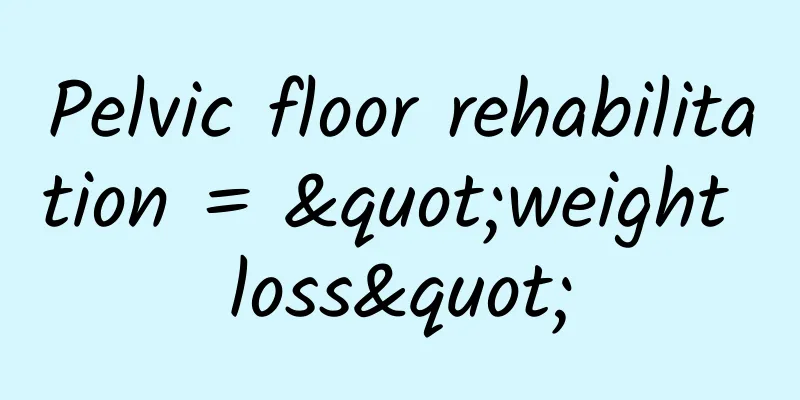Pelvic floor rehabilitation = "weight loss"

|
Female pelvic floor: It is a multi-layered muscle and fascia that closes the pelvic outlet and supports the pelvic organs, with the urethra, vagina and rectum running through it. The main bony landmarks of the pelvis are the pubic bone, ischial spine, and sacrum. They are important organs that support the trunk and protect the pelvic organs, and they are also the bony birth canal that the fetus must pass through when it is delivered. The female pelvic floor is not supported by bones, and is completely closed by muscle groups. The urethra, bladder, vagina, uterus, rectum and other organs are tightly closed to maintain their normal position so that they can perform their functions. The pelvic floor muscles control important physiological functions such as urination and defecation. In other words, if you don’t repair your pelvis, you will face a big butt, a big belly, a pot waist, elephant legs...that is, "obesity." The main manifestations of pelvic floor dysfunction Pelvic floor dysfunction (PFDs) is a common and highly prevalent disease among women, and has become one of the major chronic diseases that threaten women’s health and quality of life. It mainly includes urinary incontinence, pelvic organ prolapse, defecation disorder, sexual dysfunction, chronic pelvic pain, etc. Pelvic floor rehabilitation treatment The treatment of pelvic floor dysfunction is divided into surgical treatment and non-surgical treatment. 1. Non-surgical treatment mainly refers to pelvic floor muscle training, biofeedback therapy and electrical stimulation therapy. These methods can effectively correct the pelvic floor muscles and nerves in the long term. 2. Performing pelvic floor muscle exercises 42 days after delivery can reduce the occurrence of pelvic organ prolapse and improve the quality of sexual life of the mother. 3. Pelvic floor treatment can relieve stress urinary incontinence by more than 50% and reduce body weight by about 10%. Pelvic floor muscle training (PFMT) Also known as Kegel exercise, it refers to the patient's conscious and autonomous contraction training of the pelvic floor muscles, mainly the pubococcygeus muscle group, to enhance the resistance of the urethra and thus enhance the ability to control urine. The main content of PFMT is to repeatedly perform anal tightening training, tightening for no less than 3 seconds each time, and then relaxing, doing it continuously for 15 to 30 minutes as a set of exercises, and do 2 to 3 sets a day. |
<<: What are the characteristics of low-carbon life? What are the ways to travel with low carbon?
>>: Is it a disease if you can’t tell the directions?
Recommend
Shock! An 8-year-old girl had vaginal bleeding for a month, and a non-invasive hysteroscopy revealed the cause
At the age of 8, when she should have been innoce...
Who is suitable for eating edamame? How to eat edamame
Edamame contains trace amounts of functional flav...
What to do when you get angry? Recommend several simple fire-reducing soups
Getting angry is a very common phenomenon in life...
How can women replenish blood through dietary therapy?
As we move towards a well-off society, we only ca...
What are the taboos of soaking licorice and honeysuckle in water? What can't be eaten with honeysuckle?
Honeysuckle is a commonly used Chinese herbal med...
Why can't babies drink milk? Can't babies drink milk on an empty stomach?
According to the Academy of Pediatrics, babies un...
Is the anterior wall of the placenta fundus life-threatening?
For women, if they want to be healthier during pr...
How long does it take for intrauterine adhesions to reappear after surgery?
Intrauterine adhesions are a common disease in wo...
Picture of meat thorn inside labia minora
The health of the vulva has received more attenti...
Lose fat scientifically and embrace health with ease!
Author: Hu Bingjie Zhou Yi Xi'an Medical Coll...
What to do if you have mastitis? These methods are effective
Mastitis is a common breast disease in women, esp...
The enlargement of the left ovary is very harmful, so you should pay attention to daily ovarian care
The ovaries are important organs for women. Probl...
Causes of premature menstruation and prolonged menstruation
The general menstrual cycle is about 28 days. It ...
Menstrual period is brown in color
Menstruation is the result of the function of the...
Why do women have pain on both sides of their lower abdomen?
Due to the particularity of the female reproducti...









